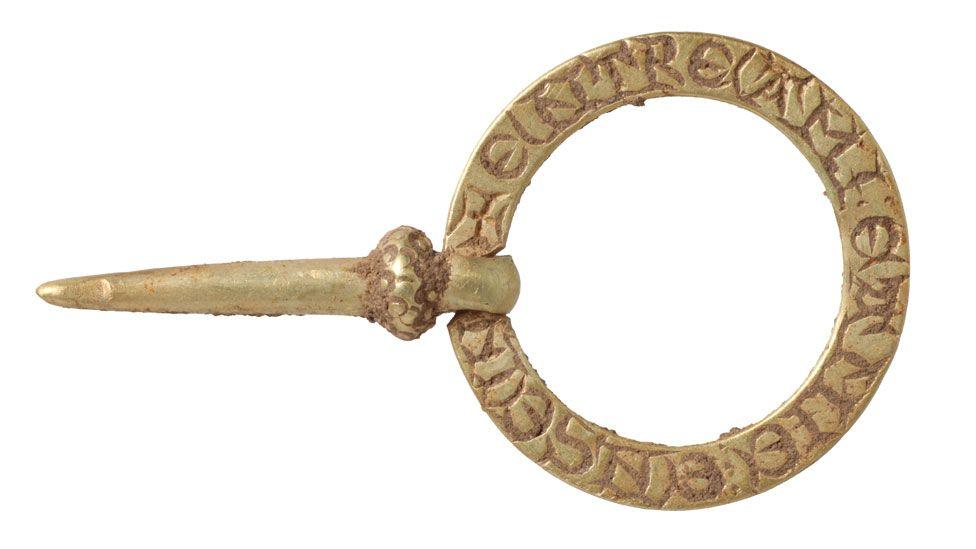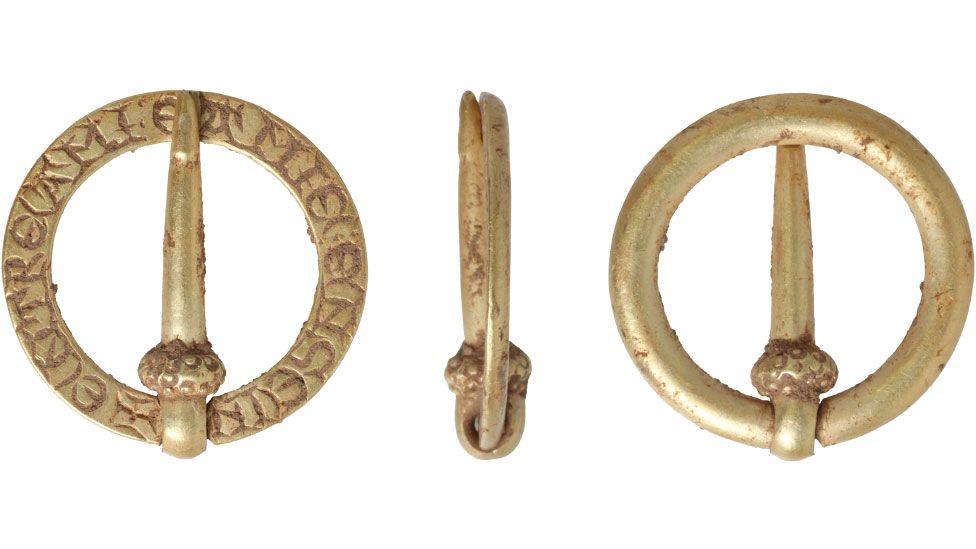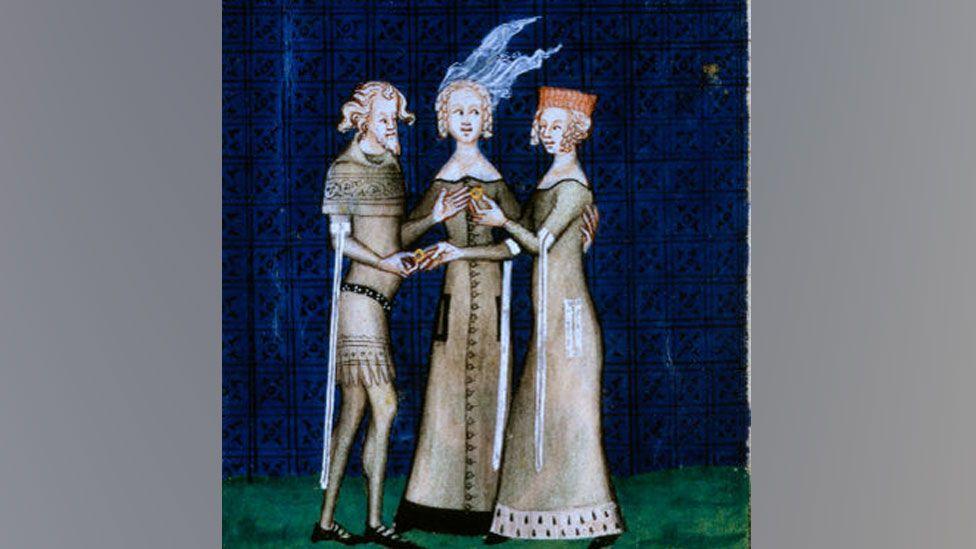'Chunky' gold brooch find a chivalric love token

Its Anglo-Norman inscription was translated as "a token between a lover and beloved", although the words were designed to be worn on the inside
- Published
A 13th or 14th Century medieval brooch inscribed with words of love from the age of chivalry has been discovered in a field.
The "chunky wodge of gold" was unearthed by a metal detectorist in a field near Docking in north Norfolk.
Its Anglo-Norman inscription was translated as "a token between a lover and beloved", and historian Helen Geake suspects it was given to a woman by a man playing the role of her champion under courtly love rules.
The brooch has been declared treasure and Lynn Museum in King's Lynn is hoping to acquire it.

The "chunky wodge of gold" weighs 2.22g (0.005lb) and is 16.7mm (0.65in) round, said Helen Geake
"Inscribed jewellery like this was designed to remind the person you gave it to of you when they were not there, and you might think the item was not so different from an engagement ring," said Dr Geake, Norfolk's finds liaison officer.
"But if you know a bit more about medieval period, there is the courtly love connection when a man could be a champion of a woman; he could shower her with gifts but not expect things from her in return."
Mottos such as "I desire to serve you" and "I wish to obey" were often used by men wishing to serve their ladies as part of this courtly love tradition, which swept across medieval Europe, external.

Courtly love was a code that prescribed the behaviour of ladies and their lovers at a time of arranged marriages, with the love supposed to be noble and unconsummated
The inscription "ENTRE AMI E AMIE ENSEIN" was translated by Malcolm Jones, author of The Secret Middle Ages, who has studied the Anglo-Norman mottos written on similar medieval finds.
"The words AMI and AMIE are the masculine and feminine forms, as in modern French, which normally mean friend, but in this context mean lover," he said.
"A lot of people are surprised to know that French was in use in England right up to the 15th Century."
Dr Jones said the brooch was one of several pieces of jewellery found over the years that "state explicitly that they are themselves ‘signs’ [ENSEIN] of love and of loyalty".
Examination by Dr Geake revealed the inscription was designed to stay secret, worn inwards rather than outwards.
"For most people, courtly love was probably never more than a fashionable affection," she added.
"But it is undoubtedly part of the history of romantic relationships. or of romance, as we still call it in English."
Get in touch
Do you have a story suggestion for Norfolk?
Follow Norfolk news on BBC Sounds, Facebook, external, Instagram, external and X, external.
Related topics
- Published15 October 2023

- Published1 December 2023

- Published19 October 2021
